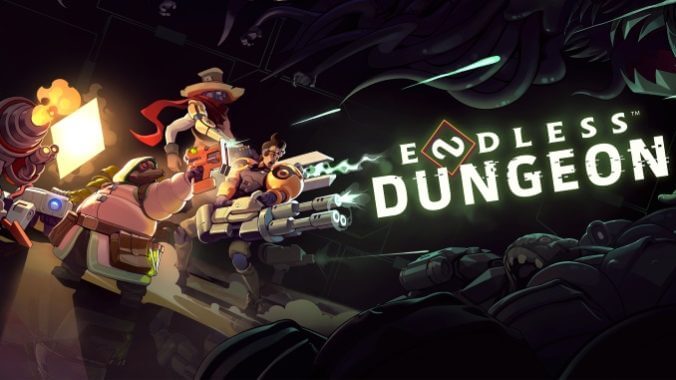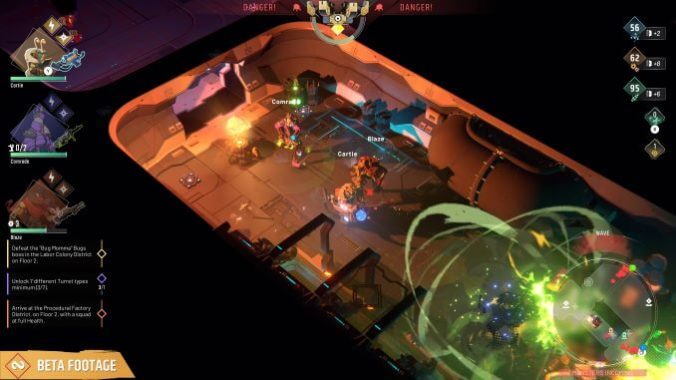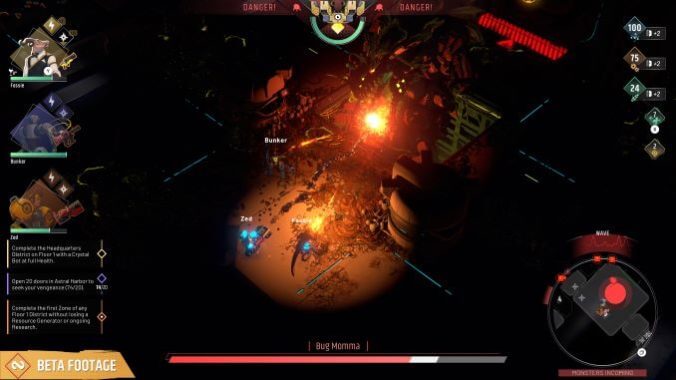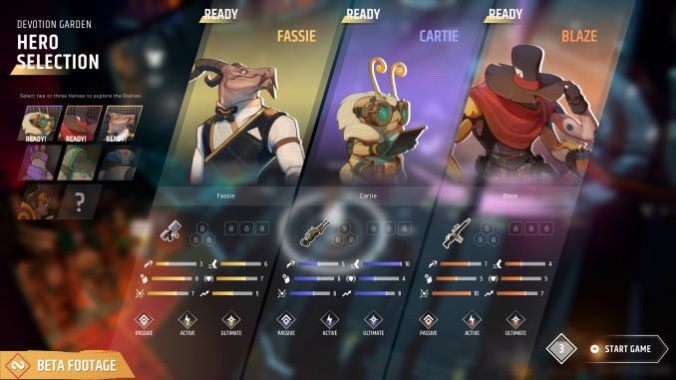With Endless Dungeon Amplitude’s Endless Universe Returns to the Co-op Roguelite Dungeon Crawler

Nestled in the city’s 12th arrondissement, Bercy is home to some of the earliest signs of human life in Paris. It also feels younger and more modern than much of the city, which is still defined by the 19th century renovation projects spearheaded by Georges-Eugène Haussmann and commissioned by Napoleon III. Today in Bercy you can find the futuristic, grass-covered stadium AccorHotels Arena, the Gehry-designed puzzle that is the Cinémathèque Française, and the brutalist headquarters of the Ministry of the Economy, Finance and Industry, which looks like a giant erector set on the edge of the Seine. All of these were built in the last 40 years, a small slice of the over 4000 years that mankind has called Bercy home.
It’s a fitting place for the game studio that made Humankind and the Endless series to call home.
Amplitude Studios is spread across a handful of floors in an otherwise nondescript modern office building in Bercy. From its windows you can see the Musée des Arts Forains, a museum devoted to fairground amusements and circus art from the 19th and early 20th century, giving the designers at Amplitude a direct view upon one of the many antecedents of the videogame. If you’ve ever toured a videogame studio before, Amplitude will look familiar; it’s a maze of low-walled cubicles covered in Funkos and other geek culture collectibles (one employee has a truly impressive collection of rubber ducks), with the occasional eight foot statue of a videogame character looming in a corner. The official break room has a variety of snacks and drinks in a small-scale version of the familiar tech industry tradition, and a couple of coin-op arcade machines from the studio’s owner, Sega. No doubt the Sonic basketball machine and electronic dartboard come in handy during those late nights of game development.
Founded by two Ubisoft expats in 2011, Amplitude has spent the last dozen years exploring its own original sci-fi property that it calls the Endless universe, with a series of acclaimed 4X strategy games based in that fictional setting. Their next project, Endless Dungeon, drops the turn-based strategy and is instead a roguelite dungeon crawling shooter with tower defense elements. (I am truly envious if that jargon means nothing to you; I’ll explain it as we go.) Scheduled to come out in May, Endless Dungeon aims to be a more accessible onramp to the Endless universe for any players who might be daunted by massive PC strategy games. Based on a recent demo we played at Amplitude’s offices in Bercy, it’s easy to see how this game could appeal to a group of friends looking for a co-op shooter to blast their way through.

Let’s break this down term by term. Endless Dungeon is what the industry calls a roguelite, an offshoot of the roguelike, a genre named after the 1980 game Rogue. When you die in a roguelike, you lose whatever power-ups and items you’ve collected throughout your run, and have to start over from the very beginning. In a roguelite, you generally lose everything when you die, but there are some permanent upgrades and power-ups you can buy that stay with your character throughout all future games. They’re also known for procedurally generated levels, meaning the game map and the location of all items and key points are different with every game. A dungeon crawler should be self-explanatory; your party is exploring a sprawling network of individual rooms and chambers (a dungeon, if you will), looking for something that’s basically treasure. Shooter can have lots of meanings in videogames, and Endless Dungeon is what is known as a top-down shooter, meaning the player views everything from above, in a bird’s eye view; Endless Dungeon also has a bit of twin-stick shooter to it, meaning you use one joystick to move your character and the other to aim, hitting a shoulder button to actually fire. Finally, in tower defense games you use in-game resources to build turrets and defensive fortifications that automatically attack enemies when they get near. Endless Dungeon is built around elements from all these genres, and although that might sound complicated, it’s easy to parse once you get a handle on it all.
The most elemental goal in a round of Endless Dungeon is to ferry your “crystal bot” from one level to the next. The crystal bot is a big crystal at the center of the first room in each run. Your four-member squad has to find the exit door by running around the level, opening up every new room they come across. Those rooms can have enemy spawn points, or useful power-up stations, or a merchant that sells new weapons, or the exit that you’re searching for. Every time you open a door you get a boost to your team’s communal stockpile of resources; there are four of them, food, industry, dust, and science, in what Amplitude calls the FIDS system. Food can be used to buy stuff from the merchant or used to create health-restoring medkits, Industry builds the turrets you’ll need to protect the crystal bot, and Science points are used to research and unlock new turrets during a run. The potential reward for opening a new door seems to be greater than the risk, at least in the demo we played, so even if you find the exit door quickly it might be smart to open every other room to get as many resources and power-ups as possible.

